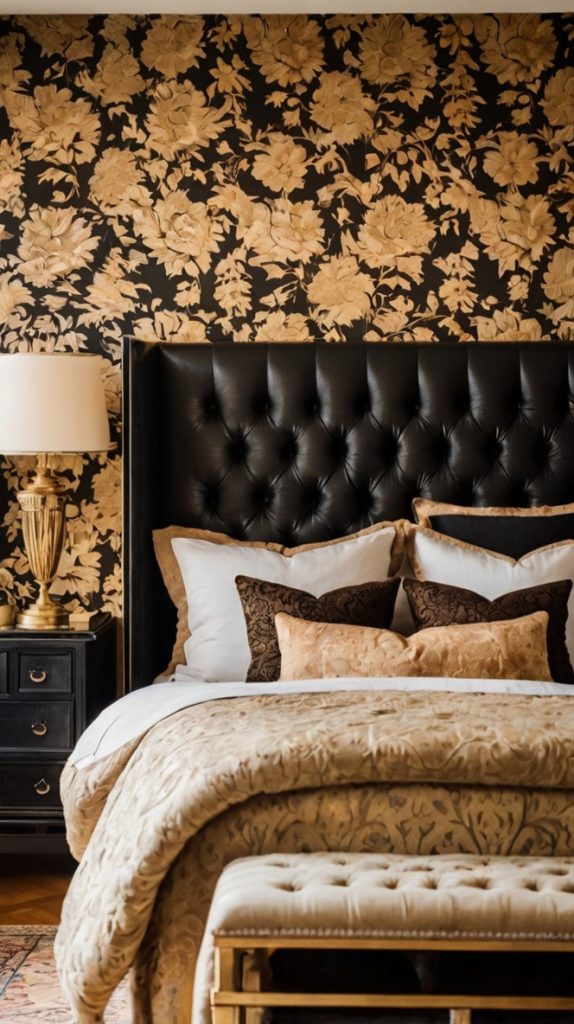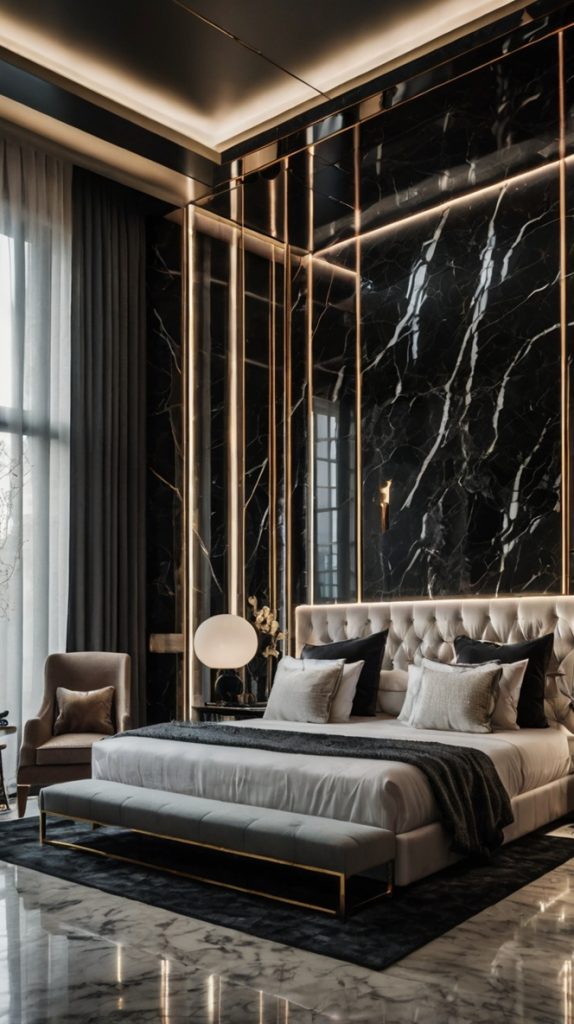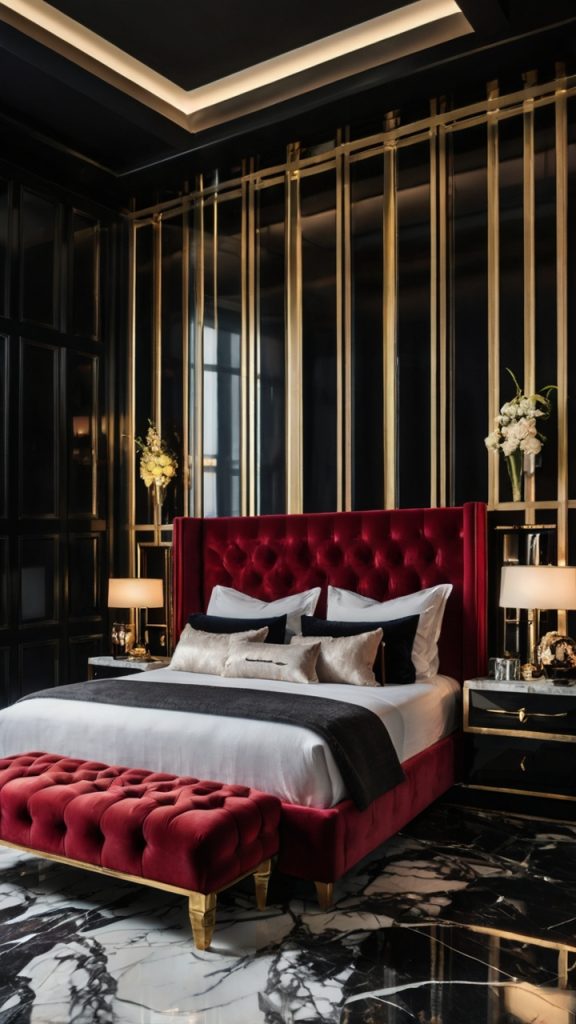15 Inspiring Very Small Living Room Ideas That Feel Bigger
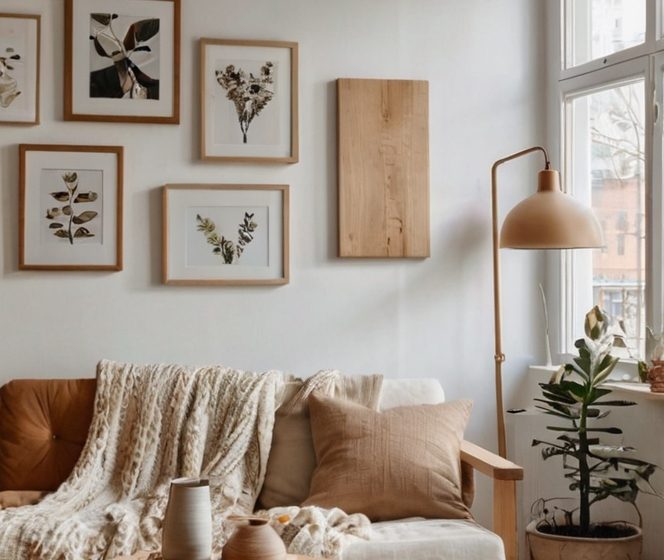
Let me guess – you’re sitting in your tiny living room right now, wondering how the heck you’re supposed to fit your life into what feels like a glorified closet? Been there, friend. When I moved into my first studio apartment, my “living room” was basically the space between my bed and the front door. But here’s the thing: small spaces don’t have to feel cramped or boring.
After years of experimenting (and plenty of furniture-moving mishaps), I’ve discovered that tiny living rooms can actually be the coziest, most functional spaces in your home. You just need to get creative and think vertically – literally and figuratively. Ready to transform your shoebox into a space that actually works? Let’s make some magic happen.
Minimalist Cozy Corner
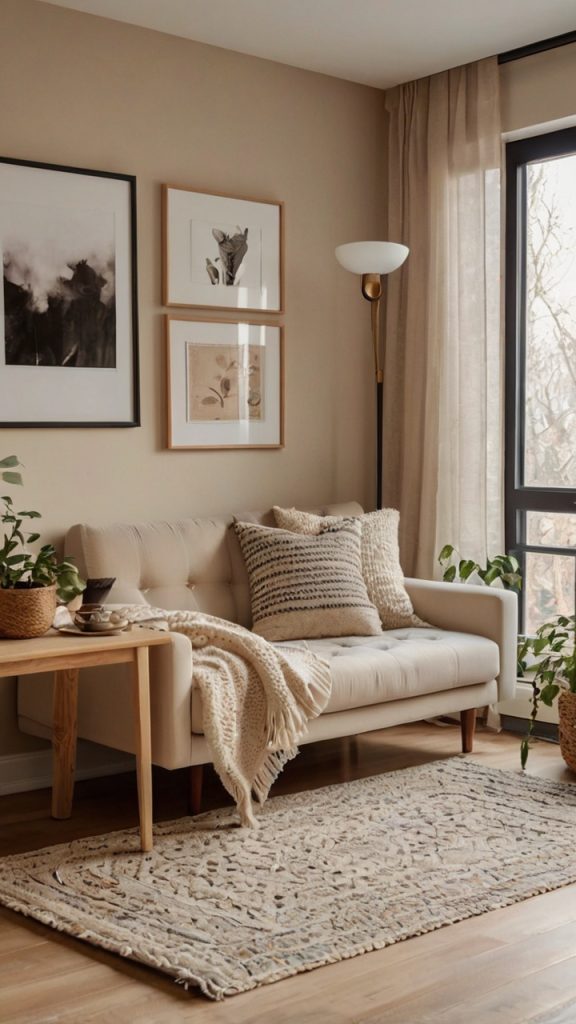
You know what’s funny? Everyone thinks minimalism means cold and boring, but I’m telling you, a minimalist approach in a small living room creates the coziest vibe ever. The trick is choosing pieces that actually matter to you instead of cramming in everything you think you “need.”
Start by picking one corner – just one – and make it your sanctuary. I transformed my awkward corner space with a single comfortable chair, a small side table, and one gorgeous floor lamp. That’s it. No clutter, no excess, just pure comfort. The key here is investing in quality over quantity – get that one chair that makes you never want to leave.
Want to know my secret weapon? Texture. Even though you’re keeping things minimal, layer different textures like a chunky knit throw, a velvet cushion, or a woven basket. These elements add warmth without adding visual clutter. Trust me, your guests will gravitate to this spot like moths to a flame.
Making It Work in Tight Spaces
The beauty of a minimalist corner is that it only needs about 4 square feet to shine. Position your chair at a slight angle – it creates better flow and somehow makes the space feel bigger. Who knew geometry could be so useful, right?
Floating Furniture Layout
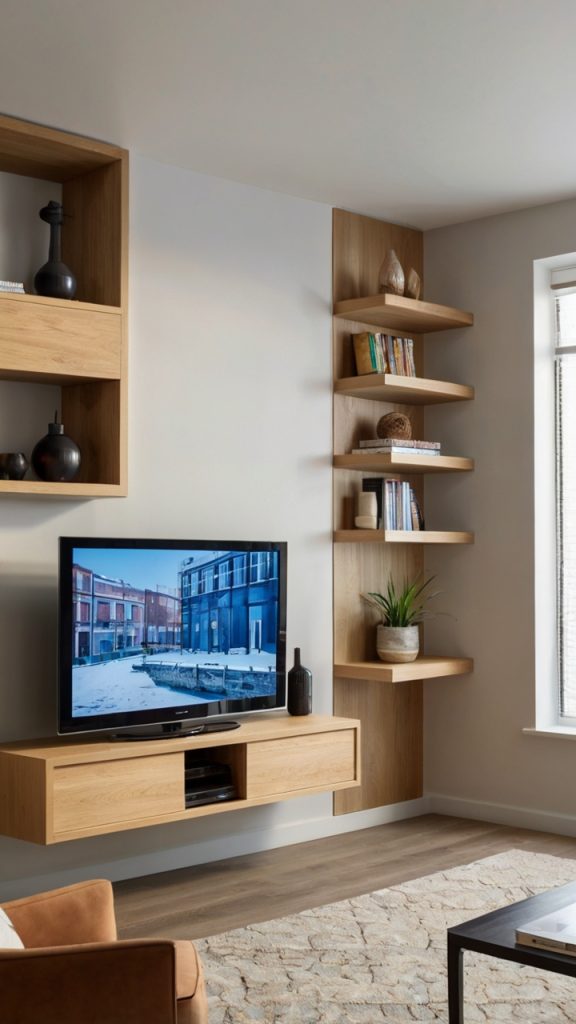
Here’s where things get interesting. Ever notice how pushing all your furniture against the walls actually makes your room feel smaller? Mind-blowing, I know. Floating your furniture creates distinct zones and gives the illusion of more space.
Pull your sofa about 6-12 inches away from the wall. I was skeptical at first too, but this simple move transformed my cramped living room into something that actually felt planned. Behind the sofa, you’ve now created a perfect spot for a console table or even just some plants on the floor.
The floating layout works especially well when you angle pieces slightly. My couch sits at a gentle diagonal, and suddenly my rectangular room doesn’t feel like a bowling alley anymore. Plus, it creates this natural conversation area that feels intentional rather than “I-just-shoved-everything-where-it-fit.”
Strategic Placement Tips
- Keep pathways clear – you need at least 30 inches for comfortable walking
- Float smaller pieces like chairs or ottomans, not just the sofa
- Use a rug to anchor your floating furniture and define the space
Mirror Wall Illusion
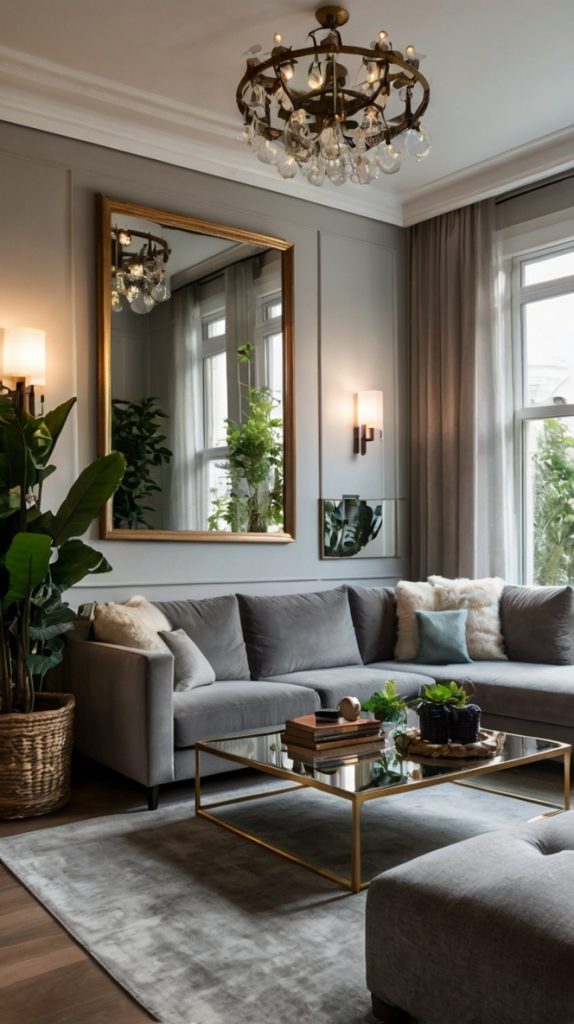
Okay, this one’s basically interior design sorcery. Mirrors double your visual space instantly – it’s like having a cheat code for small living rooms. But please, for the love of good design, don’t just slap a mirror on any wall and call it a day.
The trick is positioning. Place a large mirror opposite your window, and boom – you’ve just doubled your natural light. I hung a collection of different-sized mirrors on my darkest wall, and suddenly that depressing corner became the brightest spot in the room. It’s almost embarrassing how long it took me to figure this out.
Ever thought about mirrored furniture? A mirrored coffee table or side table reflects light and practically disappears visually. Sure, you’ll spend more time cleaning fingerprints, but the space-expanding effect is totally worth it, IMO.
Also Read: 15 Creative Shelf Decor Living Room Ideas You’ll Love
Neutral Tone Harmony
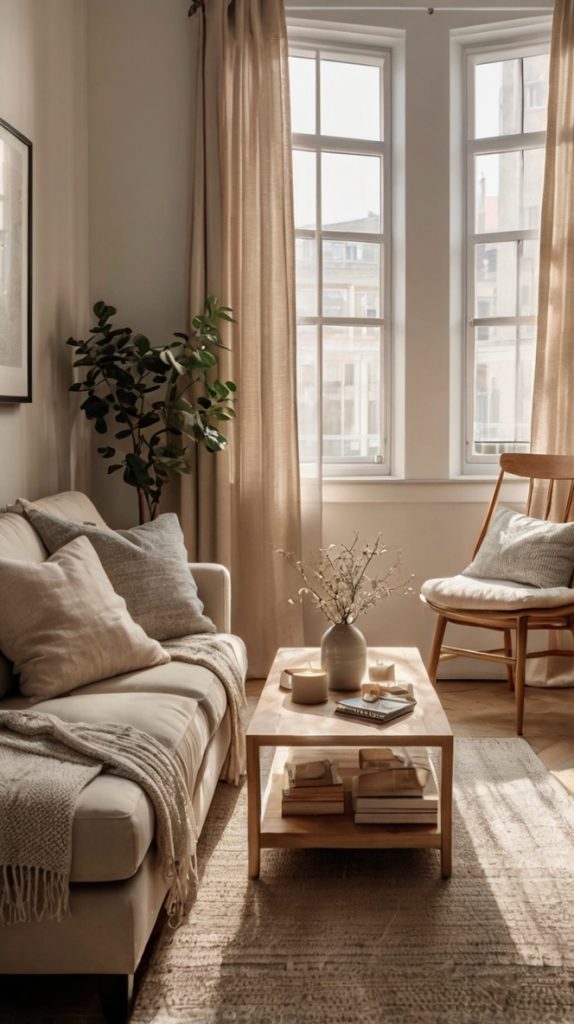
Before you roll your eyes thinking “boring beige everywhere,” hear me out. Neutral doesn’t mean bland – it means creating a cohesive backdrop that makes your space feel larger and more put-together.
I learned this the hard way after painting one wall bright orange (what was I thinking?). In small spaces, a neutral palette creates visual continuity that tricks your eye into seeing one large, flowing space instead of a choppy little box. Think soft grays, warm whites, gentle taupes – colors that play nice together.
The real magic happens when you layer different shades of the same neutral. My living room runs from pale cream walls to a medium gray sofa to charcoal throw pillows. It creates depth without the visual chaos of multiple colors fighting for attention.
Adding Personality to Neutrals
- Incorporate natural materials like wood, jute, or rattan for warmth
- Use metallic accents in gold, brass, or copper for sophistication
- Add life with greenery – plants pop beautifully against neutral backgrounds
Foldable Coffee Table Magic
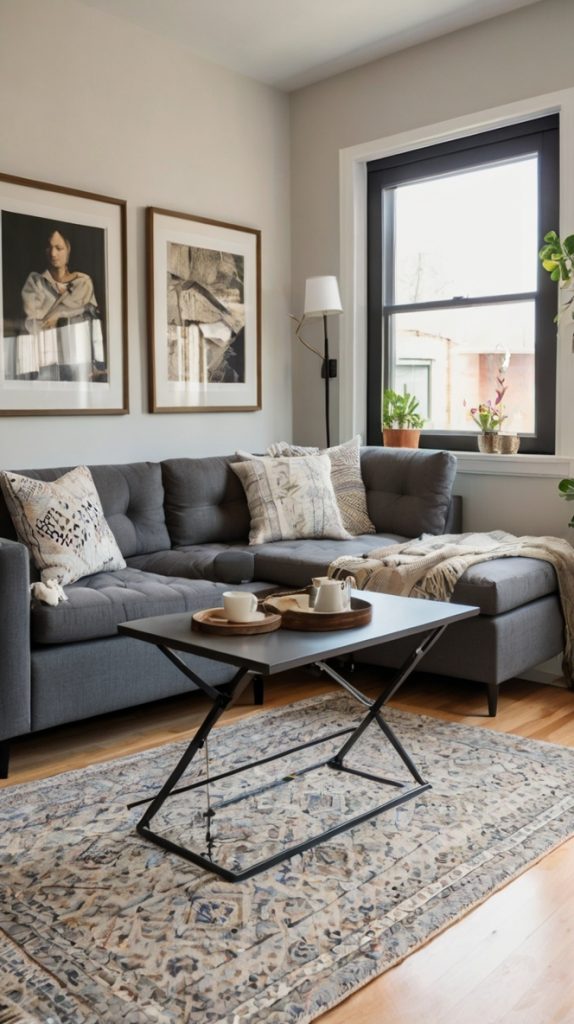
This might be my favorite small-space hack ever. A foldable coffee table gives you flexibility that traditional furniture just can’t match. Need space for yoga? Fold it away. Having friends over? Expand it to full size.
I snagged a vintage drop-leaf table from a thrift store, and it’s been a game-changer. During the day, it’s compact and tucked against my sofa. Movie night? I extend one leaf for snacks. Dinner party? Both leaves come out, and suddenly I’m hosting six people comfortably.
The best part? Modern foldable tables don’t look like card tables anymore. You can find gorgeous options in wood, metal, or even glass that nobody would guess are collapsible. Some even have built-in storage – because why have one function when you can have three?
Vertical Storage Styling
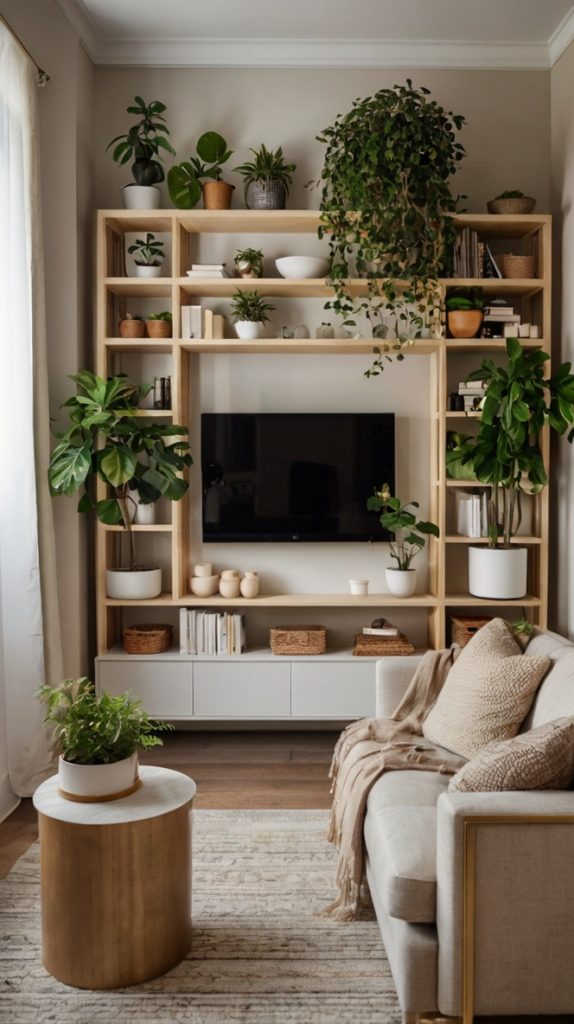
Look up. Seriously, look up right now. See all that wasted wall space? That’s your storage goldmine waiting to be tapped. In tiny living rooms, the walls are your best friends.
I installed floating shelves from floor to ceiling on one wall, and it completely changed my space. Books, plants, decorative boxes – everything lives up there now, freeing up precious floor space. The key is keeping it organized and styled, not just cramming stuff up there randomly.
Wall-mounted storage doesn’t have to scream “dorm room” either. Mix open shelving with closed cabinets, vary the heights and depths, and suddenly you’ve got an architectural feature, not just storage. Pro tip: paint your shelves the same color as your walls to make them visually recede.
Vertical Storage Must-Haves
- Ladder shelves that lean against the wall – no drilling required
- Wall-mounted desk that folds down when not in use
- Pegboard systems for customizable storage
- Hanging planters to bring greenery up off the floor
Also Read: 15 Stunning Living and Dining Room Combo Ideas for Modern
Light and Airy Curtains
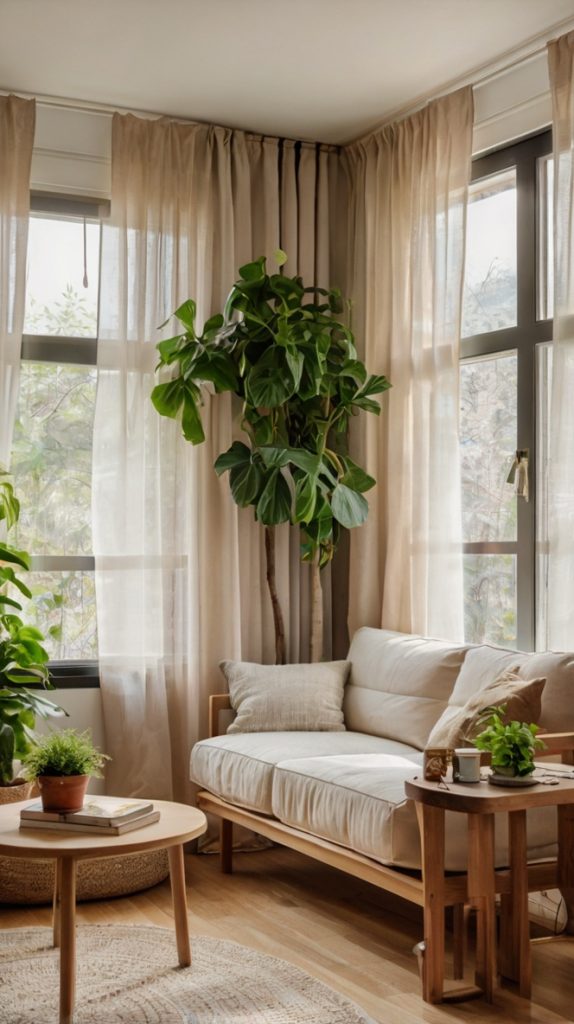
Heavy drapes in a small living room? That’s like wearing a parka to the beach – totally wrong for the situation. Sheer, light curtains let natural light flood in while still giving you privacy.
I swapped my old blackout curtains for white linen sheers, and my living room instantly felt 30% bigger. The fabric still provides texture and softness, but it doesn’t create that heavy, closed-in feeling. Plus, they billow beautifully in the breeze, adding movement to the space.
Here’s a trick: hang your curtain rod close to the ceiling and extend it beyond the window frame on both sides. This makes your windows appear larger and lets maximum light in when the curtains are open. It’s such a simple change that makes a massive difference.
Compact Sectional Setup
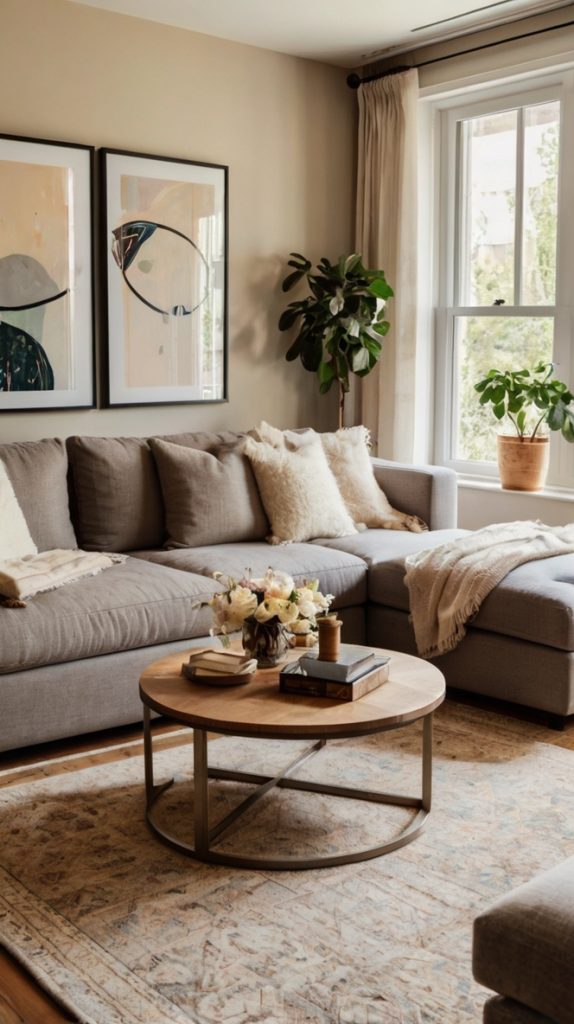
Who says sectionals are only for McMansions? A compact sectional can actually be perfect for small living rooms – you just need to choose wisely.
Look for sectionals with a chaise on one end rather than full L-shapes. My 80-inch sectional fits perfectly in my tiny space and seats four people comfortably. The chaise part doubles as a guest bed when needed (though nobody’s ever really comfortable on those things, let’s be honest).
The secret is finding one with legs that show some floor underneath. Furniture that sits directly on the ground creates visual barriers, while raised pieces maintain sight lines that keep the room feeling open. Plus, you can actually vacuum under them – revolutionary, right? 🙂
Sectional Shopping Tips
- Measure twice, buy once – seriously, measure everything
- Choose light colors to prevent the sectional from dominating the room
- Look for models with built-in storage in the chaise
- Consider modular options you can reconfigure as needed
Multifunctional Ottoman Design
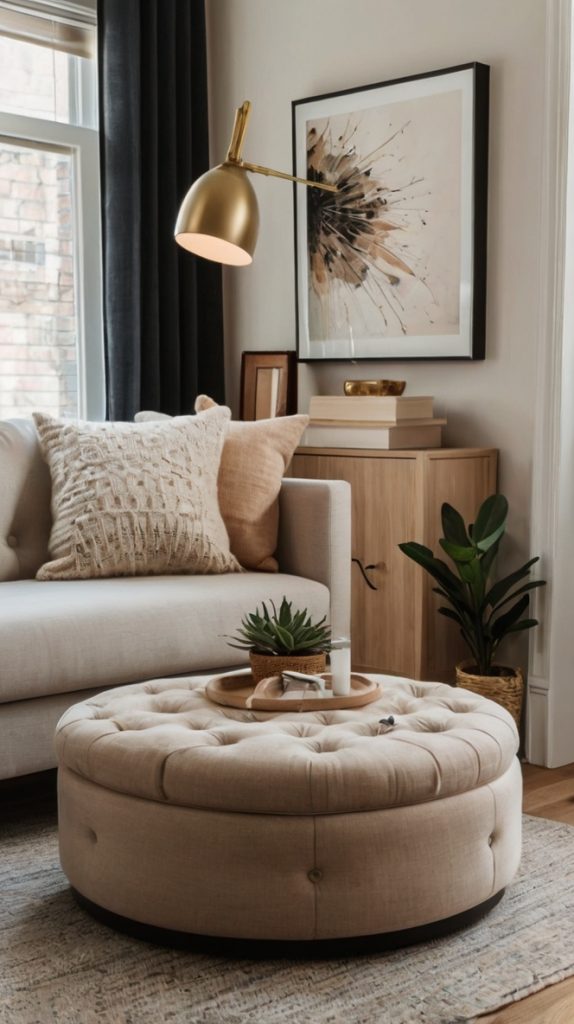
Ottomans are the Swiss Army knives of small living rooms. The right ottoman serves as seating, storage, and a coffee table all in one neat package.
I have a tufted storage ottoman that holds all my throw blankets, random cables, and those magazines I swear I’ll read someday. Pop a tray on top, and it’s suddenly a coffee table. Need extra seating? There you go. It’s basically furniture multitasking at its finest.
FYI, if you’re going the ottoman-as-coffee-table route, make sure it’s firm enough to hold drinks without wobbling. Nothing ruins a Netflix binge faster than spilled wine on your cream-colored rug (ask me how I know).
Also Read: 15 Creative Small Living and Dining Room Combo Ideas for
Corner Shelf Display
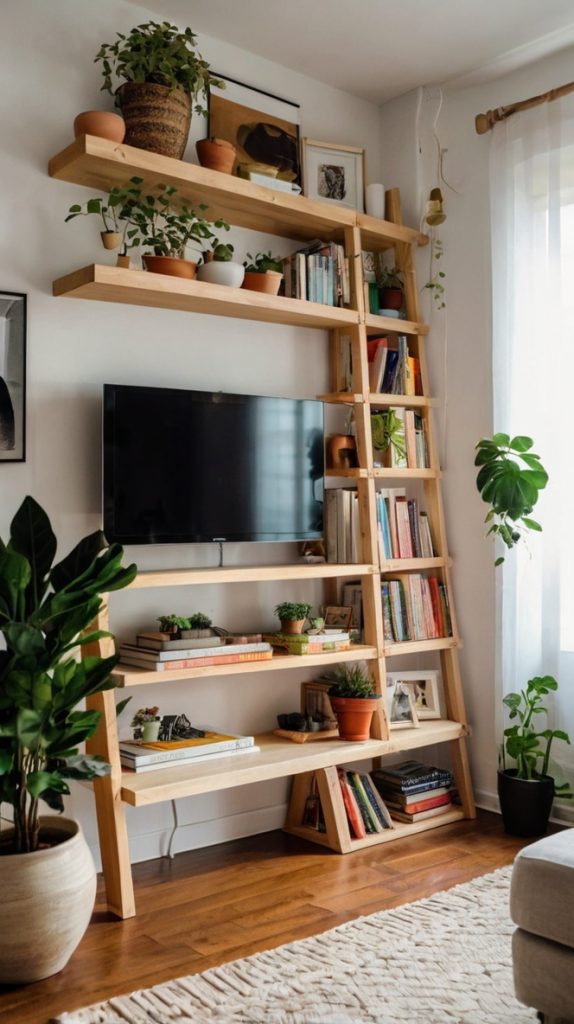
Corners are prime real estate that everyone ignores. Why? Corner shelves turn dead space into display areas without eating up any floor space.
I installed a simple corner shelf unit that goes from floor to eye level, and it holds everything from books to my succulent collection. The triangular shape fits perfectly into the corner, and because it’s vertical, it draws the eye up, making the ceiling feel higher.
Floating corner shelves work great too, especially in a zigzag pattern. They create visual interest and break up the monotony of flat walls. Just don’t overload them – the last thing you want is a shelf avalanche during your next movie night.
Soft Pastel Color Scheme
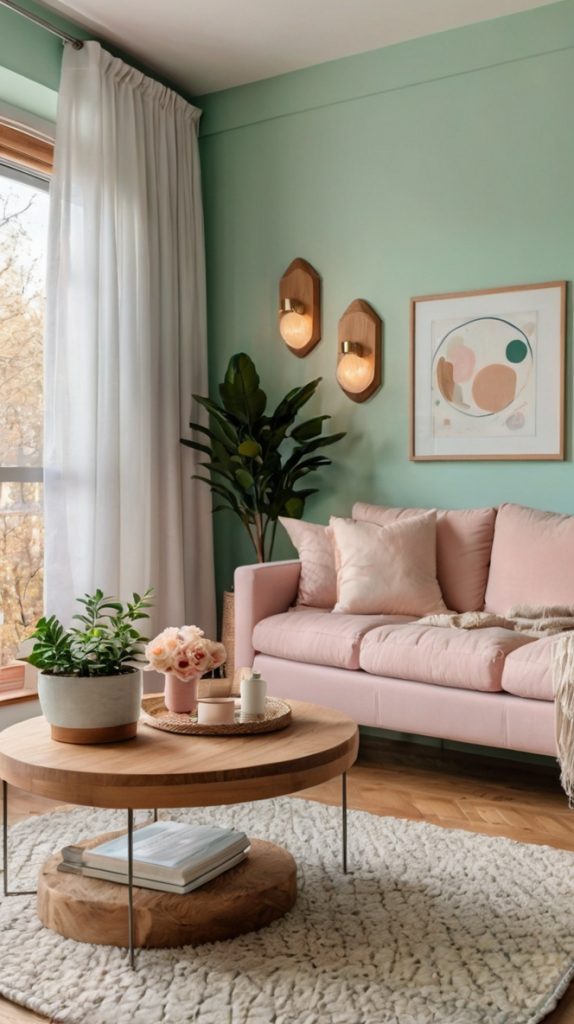
Forget what you’ve heard about only using white in small spaces. Soft pastels can make your tiny living room feel fresh and spacious while adding actual personality.
My living room features pale pink walls (millennial pink, if we’re being trendy), and everyone who visits comments on how airy it feels. The key is choosing pastels with gray undertones rather than pure, candy-sweet shades. Think dusty rose, sage green, or powder blue – colors that whisper rather than shout.
These gentle hues reflect light almost as well as white but add so much more character. Plus, they’re incredibly calming, which is exactly what you want in a small space that might otherwise feel chaotic.
Pastel Palette Perfection
- Stick to 2-3 pastel shades maximum to avoid a nursery vibe
- Balance with white or light gray for breathing room
- Add one darker accent color for grounding
- Use pastels in textiles if you’re commitment-phobic about paint
Under-the-Sofa Storage Hack
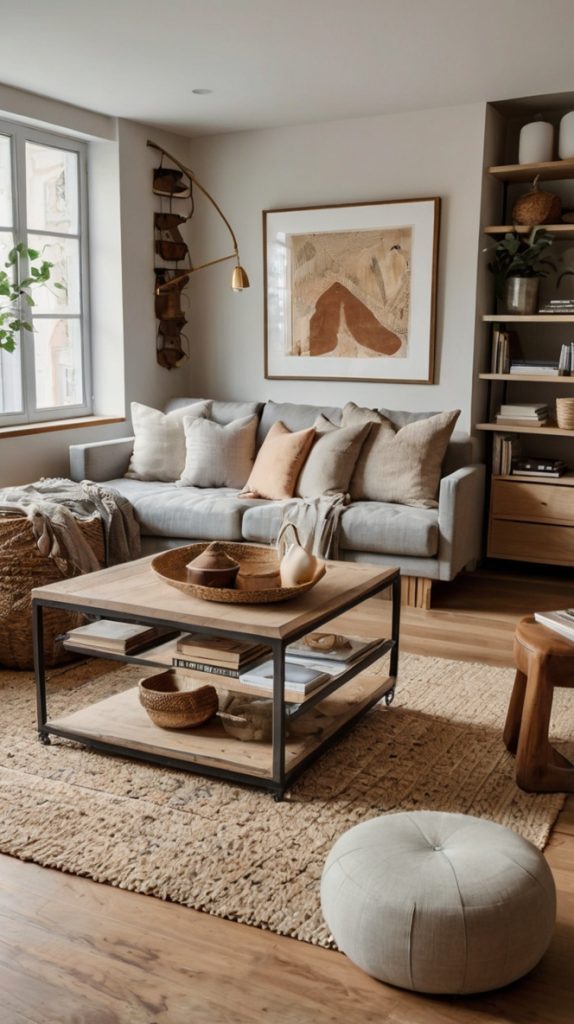
That space under your sofa? It’s not just for dust bunnies anymore. Under-sofa storage maximizes every cubic inch of your tiny living room.
I use slim storage boxes on wheels that slide perfectly under my couch. They hold everything from extra bedding to seasonal decorations. The wheels make them easy to access, and because they’re hidden, they don’t add any visual clutter to the room.
If your sofa sits too low, consider adding furniture risers. You’ll gain 3-5 inches of storage space, and as a bonus, your sofa will be easier to get up from. Win-win situation if you ask me.
Wall-Mounted TV Arrangement
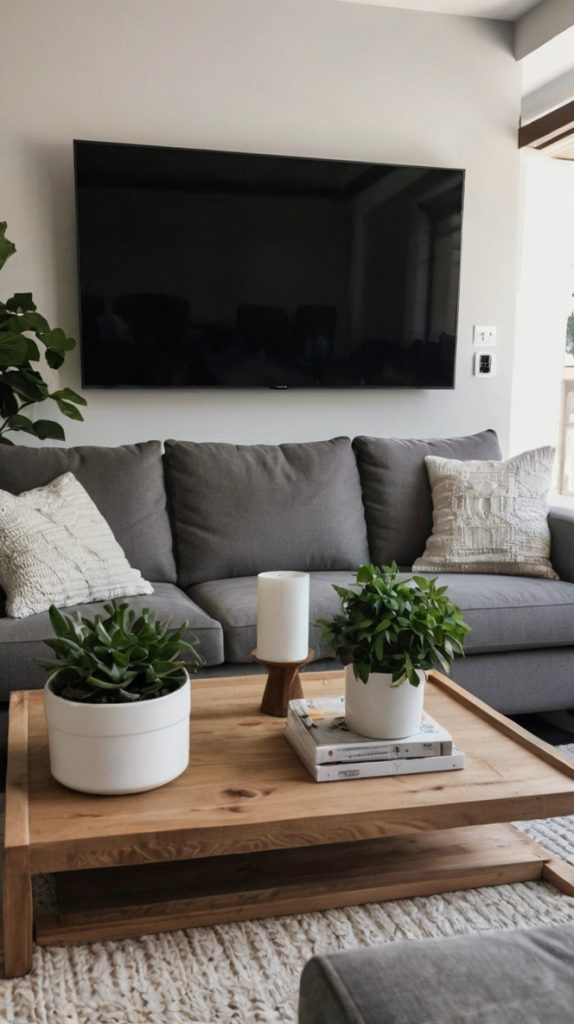
That TV stand eating up half your living room? Time for it to go. Wall-mounting your TV frees up crucial floor space and creates a cleaner, more modern look.
I mounted my TV and added a floating shelf underneath for my streaming devices and sound bar. The whole setup takes up zero floor space, and I gained enough room for a reading chair. The mounting process was way easier than I expected – took about an hour with a friend’s help.
Here’s something nobody tells you: mount your TV slightly lower than you think you should. Most people hang them too high, creating neck strain. Eye level when seated is the sweet spot.
Wall-Mount Wisdom
- Use a tilting mount for flexibility
- Hide cables with cord covers painted to match your wall
- Add floating shelves nearby for decorative balance
- Consider a corner mount if that’s your only option
Scandinavian Small Space Charm
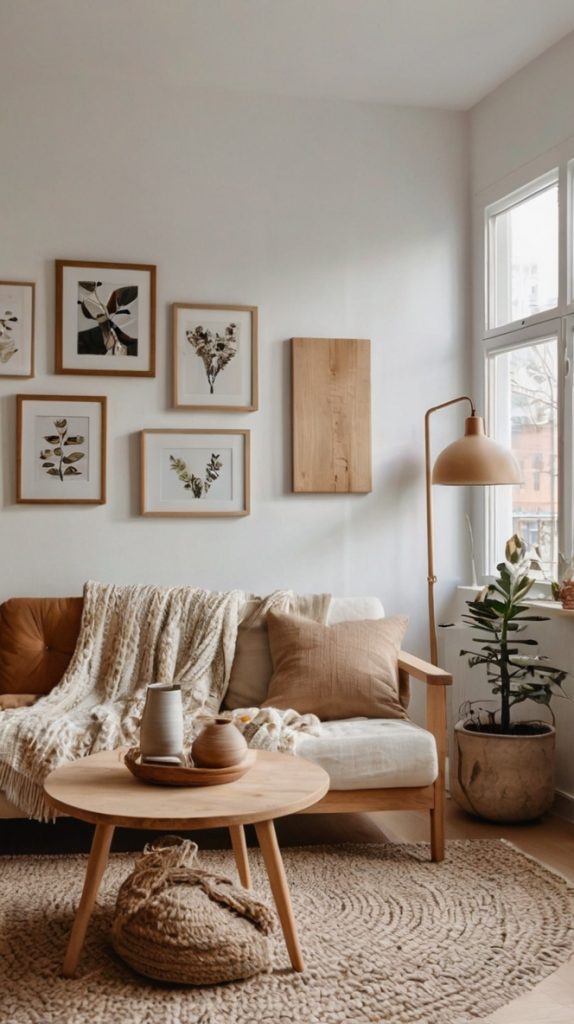
Scandinavians know how to do small spaces right. Their whole design philosophy revolves around functionality meeting beauty, which is exactly what tiny living rooms need.
The Scandi approach combines light woods, cozy textiles, and clean lines to create spaces that feel both minimal and inviting. I adopted this style in my living room with a light oak coffee table, white walls, and tons of cozy throws and cushions. The result? A space that feels twice its actual size but still incredibly homey.
The hygge factor (that’s Danish for cozy contentment) comes from layering textures and adding warm lighting. String lights, candles, and soft lamplight create ambiance without taking up any space. It’s basically the art of making small feel special instead of cramped.
Hidden Storage Furniture Pieces
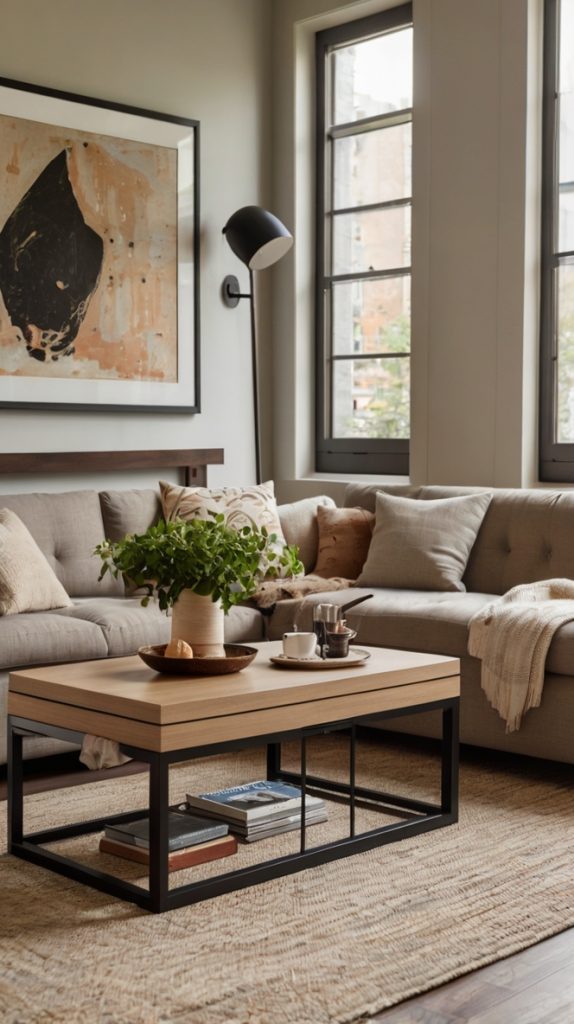
Last but definitely not least, let’s talk about furniture that lies about its true purpose. Hidden storage furniture is essential when every square foot counts.
My innocent-looking bench by the window? It holds my entire workout equipment collection. That stylish trunk that serves as my coffee table? Full of board games and extra blankets. Even my side tables have hidden compartments for remotes, chargers, and all those little things that usually clutter surfaces.
The best part about hidden storage furniture is that it maintains the clean, uncluttered look while being incredibly functional. Your guests will wonder how you keep everything so tidy, and you can just smile mysteriously while knowing your secrets are literally hidden in plain sight.
Hidden Storage Heroes
- Storage benches that double as seating
- Nesting tables with hidden compartments
- Sofas with built-in storage underneath
- Hollow ottomans with removable tops
Making It All Work Together
So there you have it – fifteen ways to transform your tiny living room from cramped catastrophe to cozy paradise. The real secret? You don’t have to implement all of these ideas at once. Start with one or two that resonate with you and build from there.
Remember, small living rooms force you to be intentional about every choice, and that’s actually a blessing in disguise. You can’t hide bad decisions behind excess space, so everything needs to earn its spot. This constraint breeds creativity, and before you know it, you’ll have a space that’s not just functional but genuinely reflects who you are.
Your tiny living room might never be featured in a mansion tour, but it can be the perfect little nest that fits your life perfectly. And honestly? Some of the best conversations, movie nights, and lazy Sunday afternoons happen in the coziest spaces. So embrace your small living room, get creative with these ideas, and make it work for you. After all, it’s not about the size of the space – it’s about how you live in it.
